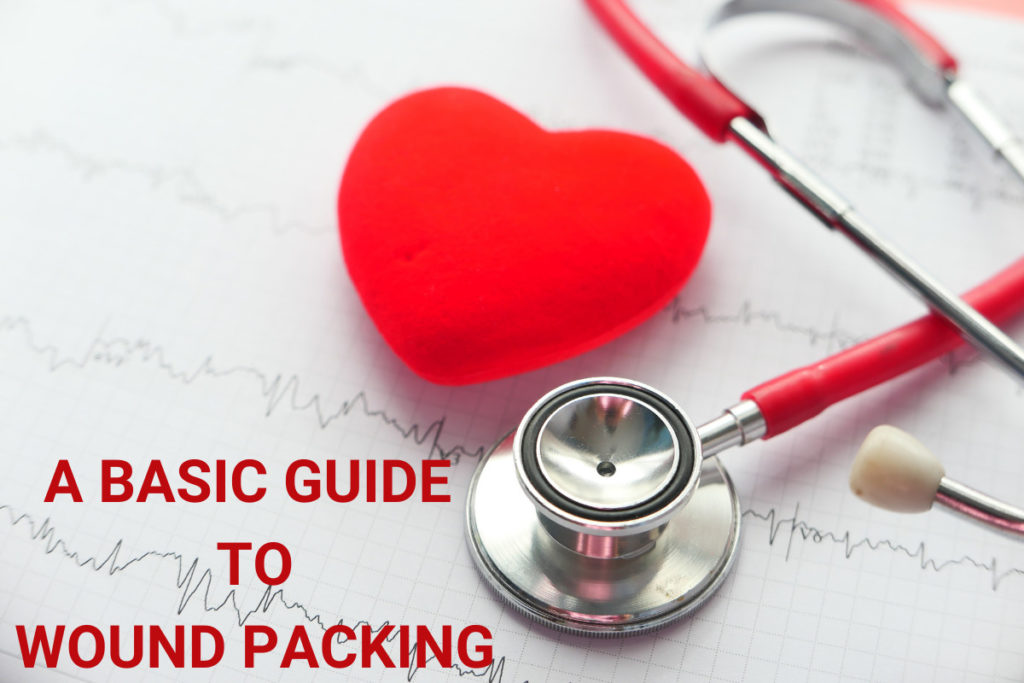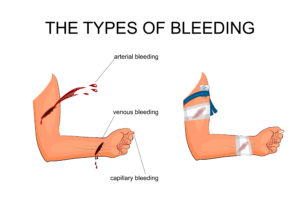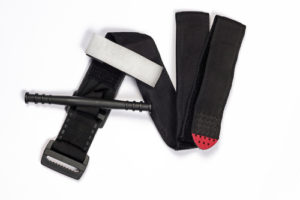What do you do when confronted with a horrific accident scene? The kind where the victim is terribly injured and the wound is gushing blood? Obviously, you need professional help and should call for medical assistance. But there are steps you can take while waiting for the ambulance to arrive.
Unsurprisingly, loss of blood is the largest cause of preventable deaths during or after a traumatic injury. These deaths could be avoided by the application of simple hemorrhage-control techniques, and thanks to educational programs such as Stop the Bleed, these techniques are becoming more familiar to the public. Still, many remain ignorant of what to do during an emergency, and that’s what this post is about.
With any wound, direct pressure to the site should be applied first in an effort to stem the flow of blood. If that doesn’t work, the following two methods must be considered: A tourniquet or wound packing.
Tourniquets:
Tourniquets are a type of dressing that you tie around the limb and tighten until the bleeding stops. This method should be used if direct pressure on the wound isn’t enough, or if there are multiple wounds or victims to attend to. Anything that is suitable can be used: A bandage, a belt, or rope. Tie this around the limb a few inches above the wound and tighten it until the bleeding stops.
Wound Packing:
If that doesn’t work, wound packing is the next step. Tourniquets can be used to control the bleeding at first and replaced by wound packing and a pressure dressing later on. This will allow for a modicum of circulation to the limb or area.
Wound packing works best on limbs, areas such as the groin and armpit, injuries where tourniquets can’t be applied, and wounds, where the bleeding is deeper and maintaining pressure, is difficult. Wounds in the chest, abdomen, or pelvis should NOT be packed.
The material used for packing can range from bandages to hemostatic products designed to enhance clot formation. But plain gauze is acceptable and a person could even improvise with clothing or a piece of cloth.
The process is straightforward: Apply pressure to the wound using whatever material you have available (Except tampons or pads. They are too absorbent and the key to controlling blood loss lies with pressure.) Place your gloved fingers inside the wound, find the damaged vein or artery and compress the source of bleeding. Pack the wound with as much material as you can, folded into the gap hand over hand.
Once the cavity is packed, create a mound over the wound for three minutes to allow for clotting. Next, apply a pressure dressing over the injury and keep the site immobile. Any movement might dislodge the packing. It’s also critical to pack as deeply and tightly as possible as the material should put direct pressure on the bleeding vessels. Big, loose dressings and wads of cloth will simply absorb blood. If the wound continues to bleed, control has failed and should be handled immediately. One option is to pack more gauze into the wound, but if that isn’t possible, you can either start over or apply as much direct pressure to the site as you can.
Final Thoughts:
The most important thing to remember in any emergency situation is to remain calm. You will be of no use to anyone should you panic. So keep calm and use your head. Also, be sure to check out Stop the Bleed’s website. They have a lot of great information there and they offer training as well.
Be a survivor.
This blog post was written by Baileigh Higgins, author of numerous apocalyptic works. You can check out her books on her website or on Amazon at:






